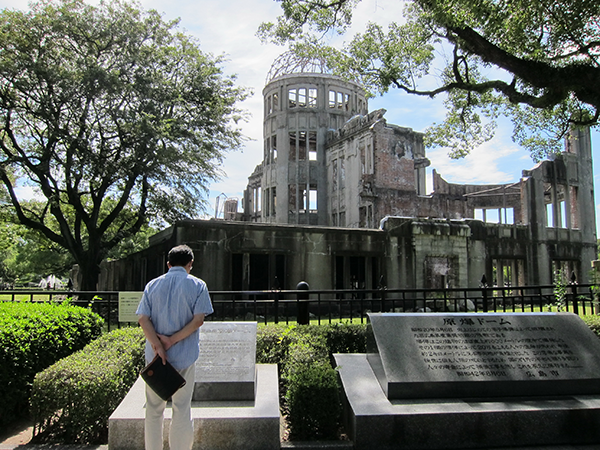Heart of Hiroshima
 |
|
A visitor at the A-bomb dome building, now a UNESCO World Heritage site.[Photo by Sun Ye/China Daily] |
Visitors to the city feel the pain of the atomic bomb, but also share the hope of a lively and determined citizenry on a quest for peace, Sun Ye reports.
'No more Hiroshima. No more Nagasaki. No more wars. Never."
In her quivering, nervous voice, Nobuko Morikawa ended her speech. For an hour, she spoke about the aftermath of Aug 6, 1945, the day when the United States dropped the atomic bomb Little Boy on Hiroshima at 8:15 am.
The bombing was one of the crucial events that culminated in the end of Japan's aggression in World War II.
"On the street, the smell was so strong that one couldn't even open the eyes."
The wounded, she says, "looked like they came from hell."
"In the hospital, all you heard around you was: 'I want to die.' 'I want to die.'"
Nobuko didn't live through it. In her mid 50s, she was sharing her 84-year-old mother's experience. Her mother, Kiyomi Kohno, had passed the baton to her so that the gut-wrenching memories don't get lost.
After recounting her mother's shock when she stepped into the ruins to look for relatives a day after the bombing, she revealed how her mother's life-long work for peace began. Nobuko also vowed to the audience at the Hiroshima Peace Memorial Museum that "I will never forget the day" and that she too would spend her years calling for a nuclear-free, peaceful world.
I emerged from the museum (part of it is under renovation until 2018) with a handful of fliers asking for peace-petition signatures and five colorful origami cranes. I will never look at them the same after learning how the cranes held and crushed Sadako Sasaki's dreams.
She had leukemia from A-bomb radiation. The girl was told that a thousand paper cranes would grant her any wish. So she folded the papers and wished for health.
At the end, the 12-year-old was still fumbling with paper cranes.














